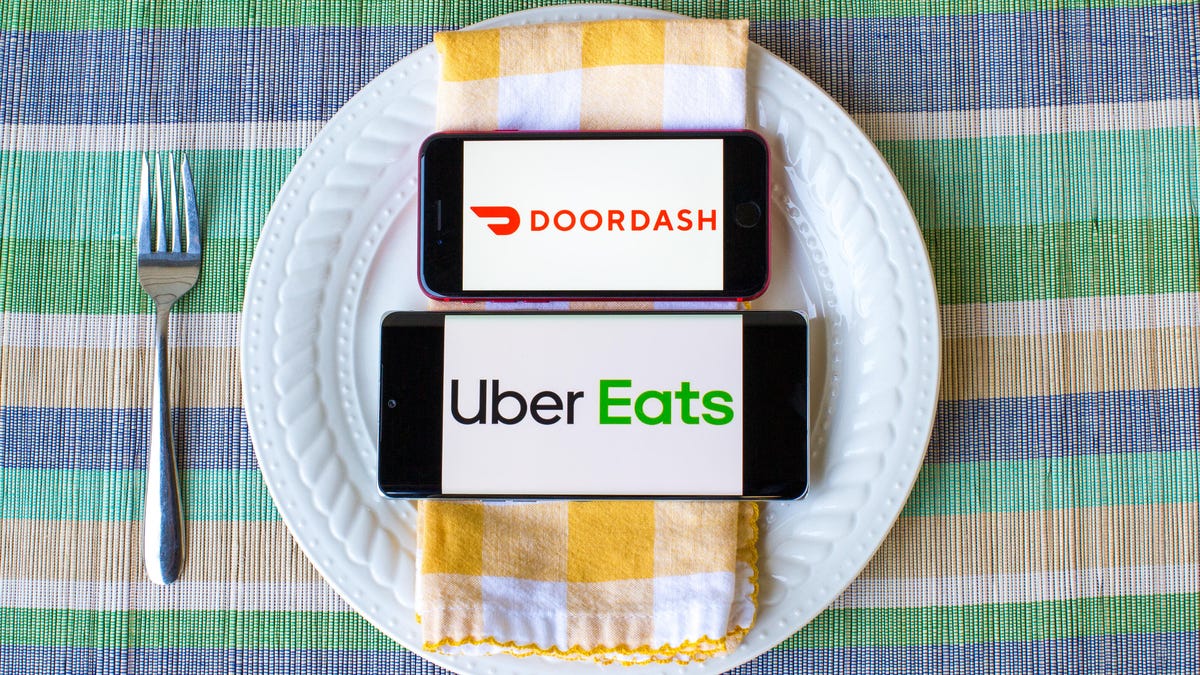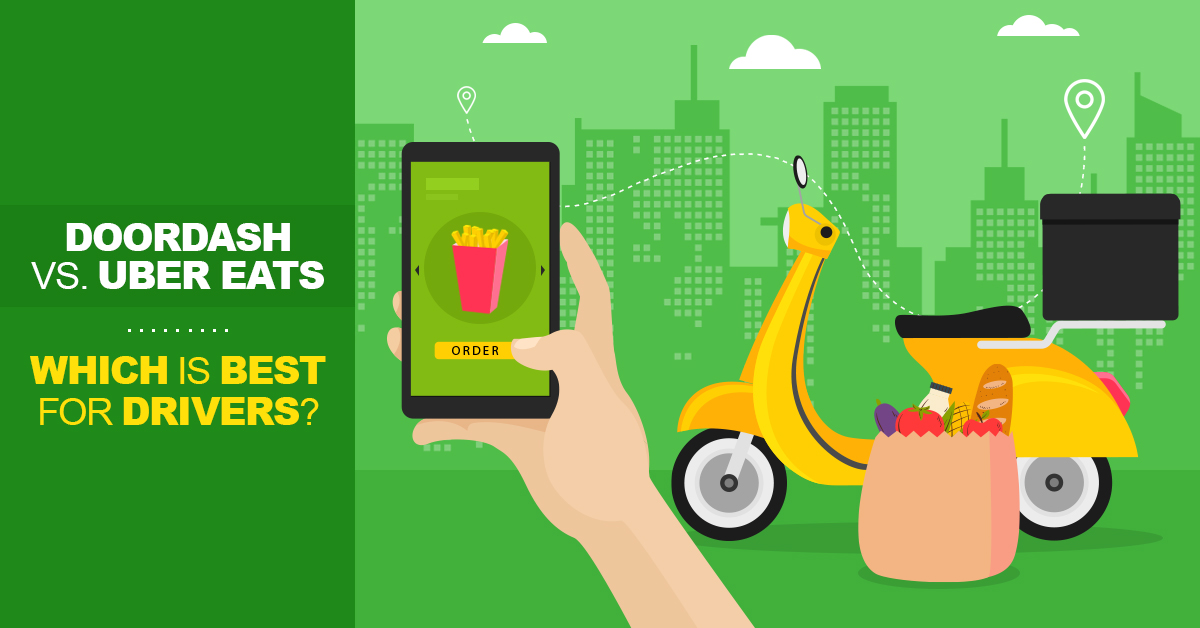DoorDash Vs UberEats: Which Food Delivery Is Best For You?
Staring at your phone, paralyzed by indecision? Is the question of DoorDash versus UberEats truly the culinary conundrum of our time? The answer, definitively, is more nuanced than you might think.
DoorDash and UberEats stand as titans in the United States' bustling food delivery arena. Both companies entice hungry customers with a plethora of restaurant choices, each boasting unique features and advantages. Navigating this landscape to determine which service best aligns with your needs requires a detailed examination.
In the following analysis, we'll dissect DoorDash and UberEats, comparing them across key metrics to empower you with the knowledge necessary to make an informed decision. Consider it a culinary cage match, with your appetite as the ultimate judge.
- Kayte Walsh And Kelsey Grammer All About The Hollywood Stars
- Fritz From American Pickers The Ultimate Guide Amp More
| Aspect | DoorDash | UberEats |
|---|---|---|
| Delivery Fees | Variable, dependent on restaurant and distance. | Typically $4.99, but subject to change based on restaurant and distance. |
| Service Fees | 10% on all orders. | 15% on all orders. |
| Restaurant Selection | Generally wider selection due to more partnerships. | Potentially exclusive partnerships with certain restaurants. |
| Delivery Time | Often faster due to a larger driver fleet. | Can vary, potentially slower during peak hours. |
| Customer Service | Dedicated 24/7 customer service team. | Customer service varies |
| Availability | Available in more cities than UberEats. | Available in major cities in the United States. |
DoorDash and UberEats each present a compelling array of strengths and weaknesses. The optimal choice hinges on your individual priorities: are you driven by the desire for the lowest possible cost, or do you prioritize a specific restaurant that might only be available on one platform? The best course of action is often experiential: dabble in both and discover which resonates most effectively with your palate and lifestyle.
DoorDash and UberEats have undeniably reshaped how Americans access their meals. The premise is simple: browse, order, and receive. However, the underlying dynamics are complex, involving intricate logistical networks and competitive pricing strategies. The question remains: is one truly superior?
- Convenience: Both platforms offer a streamlined, user-friendly experience, allowing you to order from your phone or computer and track your order's progress in real-time.
- Selection: The breadth of restaurant options is a major draw for both services, ranging from familiar fast-food chains to upscale dining establishments.
- Speed: Both DoorDash and UberEats aim for rapid delivery, with estimated arrival times often hovering around the 30-minute mark.
- Cost: While both services impose delivery fees, DoorDash often presents a more economical option.
- Customer Service: Both platforms are equipped to handle complaints and refund requests, though responsiveness may vary.
- Availability: Both DoorDash and UberEats have established a strong presence in major US cities. DoorDash, however, generally boasts wider availability across a greater number of locations.
Ultimately, the ideal food delivery service is a matter of personal preference. It's an equation with variables unique to each individual: budget, location, craving, and tolerance for potential delays. Exploring both DoorDash and UberEats is the surest path to identifying the service that best caters to your distinct requirements.
- Who Is Simon Guobadia Exploring Simon Guobadia Net Worth In 2024
- What You Need To Know About Soul Food Meals A Complete Guide
Convenience, in the context of on-demand food delivery, is not merely a perk; it's the bedrock upon which DoorDash and UberEats have built their empires. These platforms understand that time is a precious commodity, and they strive to offer a frictionless experience from order to consumption.
- Mobile Accessibility:
The ability to access a world of culinary possibilities through a smartphone is transformative. Both DoorDash and UberEats have invested heavily in their mobile applications, prioritizing intuitive navigation and seamless order customization.
- Diverse Restaurant Options:
The sheer variety of cuisines and dietary options available through DoorDash and UberEats is staggering. Whether you're craving sushi, pizza, or a vegan feast, these platforms connect you with a vast network of restaurants.
- Real-Time Tracking:
The anxiety of waiting for a food delivery is mitigated by the real-time tracking features offered by both DoorDash and UberEats. Knowing exactly where your order is in the process provides a sense of control and anticipation.
- Multiple Payment Options:
Flexibility in payment methods is essential for a convenient experience. DoorDash and UberEats accommodate a range of payment options, from traditional credit cards to modern digital wallets.
The seamless integration of technology and gastronomy has revolutionized the dining experience. DoorDash and UberEats, through their focus on convenience, have empowered customers to enjoy their favorite foods with unprecedented ease. It's a testament to the power of innovation in meeting the demands of a fast-paced world.
Restaurant selection isn't just about quantity; it's about the quality, diversity, and relevance of the culinary options presented to the user. DoorDash and UberEats recognize that a broad and appealing selection is key to attracting and retaining customers.
By forging partnerships with an extensive network of restaurants, DoorDash and UberEats offer a diverse tapestry of dining choices. This includes everything from globally recognized fast-food chains to cherished local establishments. The result is a culinary marketplace where users can readily satisfy their cravings or embark on new gastronomic adventures.
The impact of this vast restaurant selection extends beyond mere customer satisfaction. It fuels the growth of the food delivery ecosystem, stimulating demand for restaurant services and providing a valuable platform for local businesses to expand their reach. This symbiotic relationship between delivery services and restaurants creates a thriving and dynamic market.
In essence, the extensive restaurant selection offered by DoorDash and UberEats is a cornerstone of their success. It caters to a diverse spectrum of tastes, bolsters local economies, and reinforces the position of these platforms as central players in the food delivery industry. It's a win-win scenario for both customers and restaurants.
In a world increasingly governed by immediacy, speed is paramount. For food delivery services like DoorDash and UberEats, the ability to deliver meals swiftly and efficiently is a critical differentiator. Customers expect prompt service, and these platforms are constantly striving to meet those expectations.
- Dedicated Delivery Fleets:
The backbone of rapid delivery is a reliable and dedicated fleet of drivers. DoorDash and UberEats invest in cultivating and managing these networks, ensuring that there are sufficient drivers available to fulfill orders promptly.
- Optimized Delivery Routes:
Technology plays a key role in optimizing delivery routes. Advanced algorithms analyze real-time traffic data, weather conditions, and restaurant locations to determine the most efficient path for each delivery.
- Real-Time Tracking:
Transparency is crucial for managing customer expectations. Real-time tracking features provide customers with up-to-the-minute information on the status of their orders, allowing them to plan accordingly.
- Performance Incentives:
To further incentivize speed and efficiency, DoorDash and UberEats often offer performance-based incentives to their delivery drivers. This can include bonuses for completing deliveries within a specified timeframe.
The emphasis on speed reflects the evolving consumer landscape, where convenience and efficiency are highly valued. By prioritizing rapid delivery, DoorDash and UberEats cater to the time-sensitive needs of their customers, solidifying their position as leaders in the food delivery market. It's a race against the clock, and these platforms are determined to win.
While convenience, selection, and speed are all important factors, cost remains a primary consideration for many consumers. The pricing structure of food delivery services, including delivery fees and service charges, can significantly impact a customer's decision.
DoorDash's strategy of offering generally lower delivery fees makes it an attractive option for budget-conscious consumers. This competitive pricing helps DoorDash capture a larger share of the market, particularly among frequent users.
UberEats, while typically charging higher delivery fees, often compensates with premium services and exclusive offerings. This might include partnerships with upscale restaurants or special promotions that provide added value to justify the higher cost.
Ultimately, the choice between DoorDash and UberEats often boils down to a trade-off between affordability and perceived value. DoorDash appeals to those seeking the most economical option, while UberEats may be preferred by those willing to pay a premium for a more curated or exclusive experience. It's a matter of balancing budget with desire.
In any service-oriented business, customer service is paramount. DoorDash and UberEats understand that providing responsive and effective support is essential for building customer loyalty and maintaining a positive reputation.
- Prompt Response Times:
Customers expect their inquiries to be addressed promptly and efficiently. DoorDash and UberEats strive to provide quick response times through various channels, including phone, email, and live chat.
- Effective Complaint Resolution:
Handling complaints effectively is crucial for retaining customers. Both platforms have established processes for investigating and resolving customer issues in a fair and timely manner.
- Refund Policy and Transparency:
A clear and transparent refund policy is essential for building trust. DoorDash and UberEats outline the conditions under which refunds are granted and provide clear instructions on how to initiate a refund request.
- Customer Feedback and Improvement:
Valuing customer feedback is key to continuous improvement. DoorDash and UberEats actively solicit and analyze customer feedback to identify areas where they can enhance their services.
By prioritizing customer service, DoorDash and UberEats demonstrate their commitment to providing a positive and satisfying experience for their users. This investment in customer support is a crucial factor in their long-term success. It's about building relationships, not just processing orders.
The reach and availability of a food delivery service are critical factors in determining its overall impact. DoorDash's wider availability, extending to more cities than UberEats, offers significant advantages in terms of market penetration and customer convenience.
DoorDash's broader reach allows it to tap into a larger customer base, including those in smaller towns and less densely populated areas. This expanded presence gives DoorDash a competitive edge in capturing market share.
Increased availability translates directly into increased convenience for customers. By operating in more locations, DoorDash makes its services accessible to a wider audience, increasing the likelihood that customers will choose its platform for their food delivery needs.
DoorDash's wider availability strengthens its position as a leading player in the food delivery industry. With a presence in more cities, DoorDash establishes itself as a more comprehensive and reliable service provider, attracting both restaurant partners and delivery drivers to its platform.
In short, DoorDash's broader availability compared to UberEats has a significant impact on its market share, customer convenience, and overall competitiveness. It's about being where the customers are, and DoorDash is clearly striving to be everywhere.
This section aims to clarify common questions surrounding the popular food delivery services, DoorDash and UberEats, offering concise and informative answers to guide your decision-making process.
Question 1: What fundamentally separates DoorDash and UberEats?
While both DoorDash and UberEats offer food delivery services, they possess key distinctions. DoorDash often boasts lower delivery fees, appealing to budget-conscious users. Conversely, UberEats might showcase a broader array of restaurants, sometimes securing exclusive partnerships with upscale establishments.
Question 2: Which platform is known for quicker deliveries?
Both companies strive for speedy delivery. However, actual delivery times can fluctuate due to factors like traffic, restaurant proximity, and driver availability. Real-time tracking is standard on both platforms, enabling customers to monitor their order's journey.
Summary: When deciding between DoorDash and UberEats, weigh factors like delivery costs, restaurant choices, and promotional offers. Each provides reliable food delivery, and the optimal choice rests on individual priorities and circumstances. Ultimately, you will decide Which is better: DoorDash or UberEats?
- Keith Urban The Untold Story Of A Country Music Icon
- Dove Camerons Name Change From Chloe To Dove The Full Story

DoorDash vs. Uber Eats Which food delivery app is best?

Uber Eats vs DoorDash Choose Your Food Delivery Champion

Is It Better to Work for Ubereats or Doordash